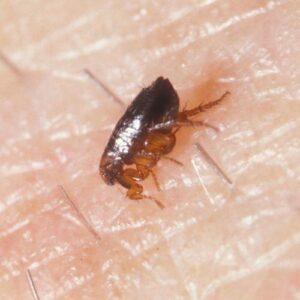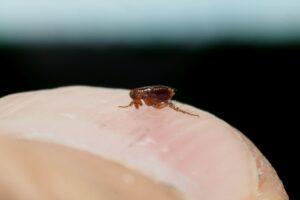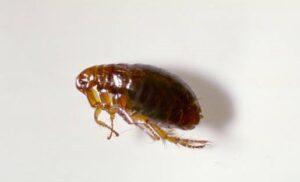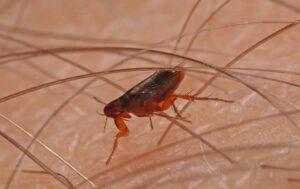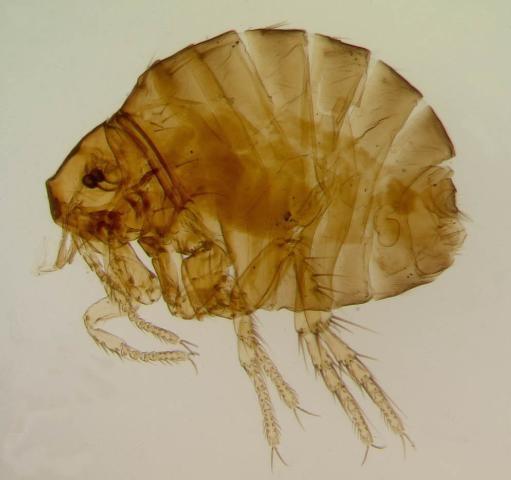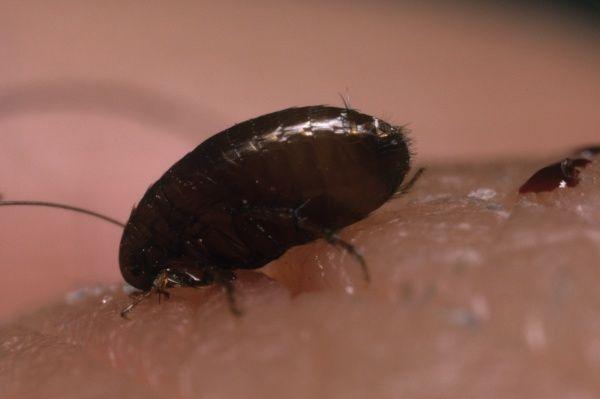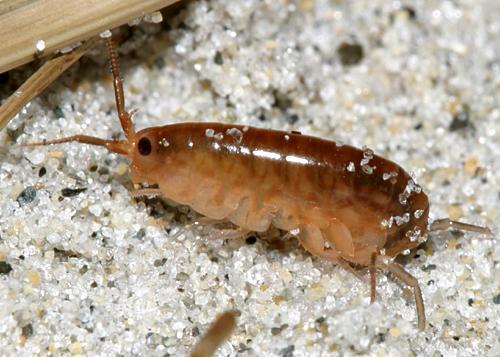Human Flea (Pulex irritans)
Updated on
17/11/2022Despite their name, human fleas can lodge themselves on any warm-blooded animal and draw its blood. But they prefer humans and pigs. Peccary and guinea pigs were their first hosts when they originated in South America. Such nutrition makes them play a vital role in disease transmission.
Scientific Classification
- Class:Insecta
- Order:Siphonaptera
- Family:Pulicidae
- Genus:Pulex
- Species:P.irritans
Conservation Status
Description
Human fleas are dark brown and have rounded heads with piercing-sucking mouth parts that help them to feed on the host’s blood. They don’t have wings, genal and prenatal combs. Their hind legs are enlarged for jumping, and the male genitalia is disproportionately big and often coiled.
Distribution: All over the world except the Arctic.
Habitat: Temperate climates. Its hosts are usually birds and mammals, especially bigger carnivores, including humans. When it is not feeding, it can be found in the homes or nests of the host animals.
Do They Bite/Sting: Yes.
Lifespan: 2 years.
Predators: Pseudoscorpions, mesostigmatid mites, and various beetles, ants, and other arthropods found in the habitats of the hosts.
Behavior and Characteristics
Diet
The larvae consume a range of organic debris while the adults pierce the host’s skin to suck in blood.
Bite
The bites of these fleas look like small red dots that appear in tiny rows that remain inflamed for several weeks. Each bite has a single perforation point at the center. The affected area can cause itching, and discomfort. Hair loss and scratching are other common symptoms of the bite. High-volume infestations can even cause anemia.
Life Cycle
1. Egg Stage
The females deposit eggs of 0.5 mm length in the environment. They are oval-shaped and pearly white in color. The eggs are typically laid on the body of the host but often fall off at different places. They hatch into the larvae in around 3-4 days.
2. Larva Stage
The yellow or creamy white larvae are around 0.6 mm in size. They have 13 segments with bristles on each and eventually change into pupae after 3 molts.
2. Pupa Stage
The 4×2 mm pupae are housed in cocoons, often covered with environmental debris like pebbles, sand, etc. The larval and pupal stages take 3-4 weeks to complete, after which the adults come out. However, if conditions are unfavorable, the pupa can remain dormant for as long as a year.
3. Adult Stage
The size of the adults is roughly 1.5-4 mm. Their body is flattened from side to side, making it difficult to remove them from hair too.
Comparison with Similar Species
Cat Flea
Cat fleas prefer cats and are more common on them. They don’t carry human diseases but can carry tapeworms that infect dogs.
Dog Flea
Dog fleas prefer dogs and are more common on them. Like cat fleas, dog fleas are not carriers of human diseases but may carry tapeworms.
Getting Rid of Human Fleas
Apart from the harm caused by its bite, human fleas can be a carrier of the bacteria that causes plague. It is a serious disease that can even cause death in humans and other mammals.
Common treatments for human fleas are body shaving, combing, and using medicated shampoos on the affected areas. Both the host and the environment must be treated to prevent the insect. So carpets, floor surfaces, etc., must be vacuumed and shampooed regularly to avoid infestations.
In case of an infestation, clothing and bedding that may have been exposed to the fleas should be washed thoroughly in hot water and kept separate from other objects. Extreme cases may warrant calling in professional pest control services.
FAQs
Human fleas are more common in North America than dog fleas but not as much as cat fleas. It is more prevalent in people working with or living near pigs.
Source
indiamart.com, live.staticflickr.com, media.istockphoto.com, assets-us-01.kc-usercontent.com,




